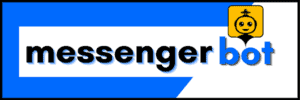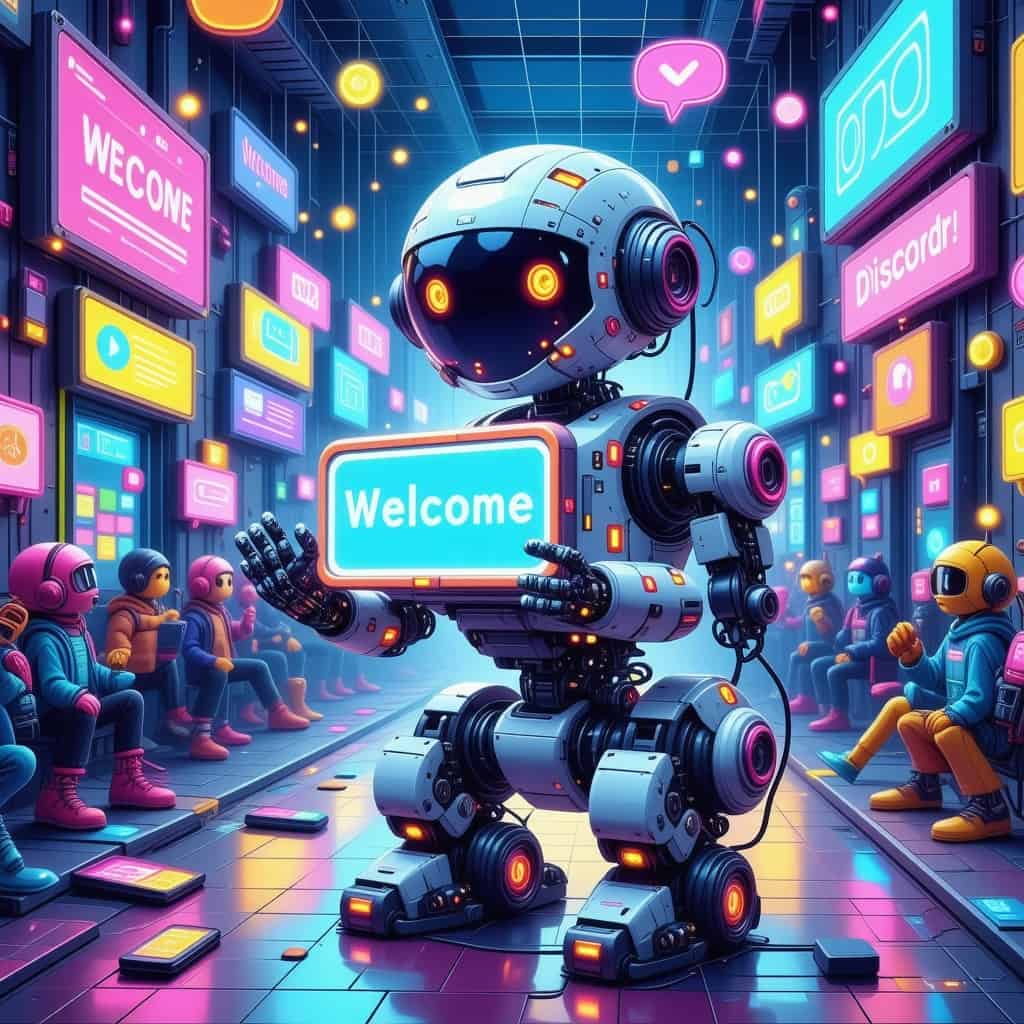In today’s digital landscape, businesses are constantly seeking innovative ways to enhance customer engagement and streamline communication. One powerful tool that has emerged is the WhatsApp chatbot builder, enabling companies to create personalized and efficient interactions with their audience. This comprehensive guide will walk you through the essential steps on how to create a WhatsApp chatbot, from understanding the basics to exploring free options available in the market. We will delve into key features of a WhatsApp chatbot builder, discuss the costs associated with developing a WhatsApp bot, and highlight successful use cases across various industries. Whether you’re looking to create a WhatsApp bot for customer support or marketing, this article will provide valuable insights and practical tips to help you get started. Join us as we explore the world of creating WhatsApp chatbots and discover how you can leverage this technology to elevate your business communication.
How to build a WhatsApp chatbot?
Understanding the Basics of WhatsApp Chatbots
Building a WhatsApp chatbot is an essential step for businesses looking to enhance customer engagement and streamline communication. A WhatsApp chatbot can automate responses, provide instant support, and improve user experience. To create a WhatsApp bot, you need to understand the foundational elements that make up a successful chatbot.
Steps to Create a WhatsApp Chatbot
Here’s a straightforward guide on how to create a WhatsApp bot:
- Getting Started: Begin by setting up a WhatsApp Business Account. Download the WhatsApp Business app and register your phone number. This account is essential for creating a chatbot as it provides access to the WhatsApp Business API, which is necessary for automation.
- Choose a Chatbot Platform: Select a reliable chatbot development platform such as Twilio, Chatfuel, or ManyChat. These platforms offer user-friendly interfaces and pre-built templates that simplify the chatbot creation process.
- Create a Welcome Message: Design an engaging welcome message that introduces users to your chatbot. Include fallback options that guide users if they input unexpected responses. This ensures a smooth user experience and encourages interaction.
- Develop a Menu of Options: Create a structured menu that presents users with clear options. This can include FAQs, product inquiries, or customer support. A well-organized menu enhances user navigation and satisfaction.
- Link Menu Options to Actions: Connect each menu option to specific actions or responses. For instance, if a user selects “Order Status,” the chatbot should retrieve and display the relevant information. This functionality can be achieved through API integrations with your existing systems.
- Create a Seamless Exit Path: Ensure users can easily exit the conversation or return to the main menu. Providing a clear exit path improves user experience and encourages users to return in the future.
- Test Your Chatbot: Conduct thorough testing of your chatbot to identify any issues or areas for improvement. Utilize beta testers to gather feedback on usability and functionality. Regular updates and optimizations based on user interactions will enhance performance.
- Monitor and Analyze Performance: After launching your chatbot, continuously monitor its performance using analytics tools. Track metrics such as user engagement, response times, and satisfaction rates. This data will help you refine your chatbot and improve user experience over time.
Key Features of a WhatsApp Chatbot Builder
When selecting a platform to create a WhatsApp chatbot, consider the following key features that can enhance your bot’s functionality:
- Automated Responses: The ability to provide instant replies to common inquiries, ensuring users receive timely information.
- Customizable Templates: Access to pre-designed templates that can be tailored to fit your brand’s voice and messaging.
- Analytics and Reporting: Tools to track user interactions and engagement metrics, allowing for continuous improvement of the chatbot.
- Integration Capabilities: The ability to connect with other platforms and services, such as CRM systems, to streamline operations.
- Multilingual Support: Features that allow the chatbot to communicate in multiple languages, catering to a diverse audience.
By leveraging these features, you can create a powerful WhatsApp chatbot that enhances customer interactions and drives business success. For more insights on chatbot functionalities, explore resources from Brain Pod AI.

Can I create a WhatsApp chatbot for free?
Yes, you can create a WhatsApp chatbot for free by following these steps:
- Choose a Chatbot Platform: Select a user-friendly chatbot platform that offers free plans, such as ManyChat, Chatfuel, or Twilio. These platforms provide intuitive interfaces to design your chatbot without needing coding skills.
- Set Up Your WhatsApp Business Account: To create a WhatsApp chatbot, you must have a WhatsApp Business account. Download the WhatsApp Business app and register your business phone number. This account is essential for integrating with chatbot platforms.
- Design Conversational Flows: Utilize the platform’s tools to create conversational flows. This involves mapping out how users will interact with your chatbot, including greetings, FAQs, and responses to common inquiries. Ensure your flows are engaging and user-friendly.
- Integrate with WhatsApp: Follow the platform’s instructions to connect your chatbot to your WhatsApp Business account. This typically involves generating an API key or using a webhook to facilitate communication between the chatbot and WhatsApp.
- Test Your Chatbot: Before launching, thoroughly test your chatbot to ensure it responds accurately and efficiently. Make adjustments based on user feedback and interactions to enhance performance.
- Launch and Promote: Once satisfied with the functionality, launch your chatbot and promote it through your business channels. Encourage users to interact with it for a seamless experience.
For more detailed guidance, you can refer to resources from WhatsApp Business API Documentation and ManyChat’s Official Guide. These sources provide comprehensive insights into creating and optimizing your WhatsApp chatbot effectively.
Exploring Free WhatsApp Chatbot Builders
When considering how to create a WhatsApp bot without incurring costs, exploring free WhatsApp chatbot builders is essential. Platforms like ManyChat and Chatfuel offer robust features that allow you to create engaging chatbots without any financial commitment. These tools often come with templates and drag-and-drop interfaces that simplify the process of creating a WhatsApp chatbot.
Additionally, using a whatsapp chatbot builder free can help you test various functionalities before deciding on a paid plan. This approach allows you to experiment with different conversational flows and features, ensuring that your final product meets your business needs.
Benefits of Using a WhatsApp Chatbot Free Version
Utilizing a free version of a WhatsApp chatbot builder comes with several advantages:
- No Financial Risk: You can explore the capabilities of chatbot technology without any upfront investment, making it ideal for startups and small businesses.
- Learning Opportunity: Free versions often provide a hands-on experience, allowing you to learn how to create a WhatsApp bot effectively and understand user interactions.
- Basic Features Access: Most free versions include essential features that are sufficient for small-scale operations, such as automated responses and basic analytics.
- Scalability: As your business grows, you can easily transition to a paid plan that offers more advanced features and capabilities.
By leveraging these free tools, you can start creating a WhatsApp chatbot that enhances customer engagement and streamlines communication without any initial costs.
How much does it cost to develop a WhatsApp chatbot?
The cost to develop a WhatsApp chatbot can vary significantly based on several factors, including complexity, features, and the development approach. Here’s a breakdown of typical pricing structures:
- Custom Development: For a fully customized WhatsApp chatbot, costs generally range from $75,000 to $150,000 or more. This price reflects the need for tailored solutions that meet specific business requirements, including advanced functionalities like natural language processing (NLP) and integration with existing systems.
- Chatbot as a Service (CaaS): If you opt for a CaaS model, which provides pre-built templates and tools, the starting costs can be significantly lower, often beginning around $5,000 to $20,000. However, these solutions may come with limitations in customization and scalability.
- Ongoing Maintenance and Updates: It’s important to factor in ongoing costs for maintenance, updates, and potential scaling of the chatbot. This can add an additional 15-20% of the initial development cost annually.
- Additional Features: Incorporating advanced features such as AI capabilities, analytics, and multi-language support can increase the overall cost. For instance, integrating machine learning algorithms may add $10,000 to $30,000 to the project.
- Development Timeframe: The development timeline can also impact costs. A simple chatbot may take 3-6 months to develop, while a more complex solution could take 6-12 months or longer.
In summary, the total cost to develop a WhatsApp chatbot can range from $5,000 for basic CaaS solutions to over $150,000 for fully customized, feature-rich applications. For more detailed insights and case studies, refer to sources such as Chatbots Magazine and Gartner Research.
Pricing Models for WhatsApp Chatbot Development
When considering how to create a WhatsApp bot, understanding the pricing models is crucial. The two primary models are:
- Fixed Pricing: This model is suitable for projects with well-defined requirements. It allows businesses to know the total cost upfront, making budgeting easier.
- Hourly Pricing: This model is more flexible and is often used for projects where requirements may evolve. However, it can lead to unpredictable costs if the scope of work expands.
Choosing the right pricing model depends on your specific needs and the complexity of the WhatsApp chatbot you wish to create. For further insights on chatbot pricing, you can explore our evaluation of chatbot service providers.
Comparing Costs: Free vs. Paid WhatsApp Chatbot Builders
When deciding whether to create a WhatsApp chatbot, it’s essential to compare the costs associated with free and paid options. Free WhatsApp chatbot builders can be a great starting point for small businesses or those testing the waters. However, they often come with limitations in terms of features and scalability.
On the other hand, paid WhatsApp chatbot builders offer advanced functionalities, customization options, and ongoing support, which can justify the higher initial investment. For example, platforms like Brain Pod AI provide comprehensive solutions that can enhance your chatbot’s capabilities significantly.
Ultimately, the choice between free and paid options should align with your business goals and the level of engagement you wish to achieve with your audience. For more information on the features of various chatbot builders, check out our guide on the best chatbot solutions.
Can I use a chatbot on WhatsApp?
Yes, you can use a chatbot on WhatsApp to enhance customer interaction and streamline communication. Implementing a WhatsApp chatbot can significantly improve client experience by providing instant responses and reducing the workload for human agents. Here’s a comprehensive guide on how to create a WhatsApp chatbot in 8 steps, utilizing no-code solutions:
- Choose a Chatbot Platform: Select a user-friendly chatbot platform that integrates seamlessly with WhatsApp, such as Tidio, Chatfuel, or ManyChat. These platforms allow you to create a WhatsApp bot without coding knowledge.
- Sign Up for WhatsApp Business API: To deploy a chatbot on WhatsApp, you need access to the WhatsApp Business API. Apply through the WhatsApp Business website or partner with a provider that offers API access.
- Define Your Bot’s Purpose: Clearly outline the objectives of your chatbot. Common uses include answering FAQs, booking appointments, and providing product information, which can significantly enhance customer service.
- Design Conversational Flows: Map out the conversation paths your chatbot will take. Use tools like flowcharts to visualize interactions, ensuring a smooth user experience.
- Create Engaging Content: Write clear and concise responses for your chatbot. Incorporate keywords relevant to your business to improve discoverability and engagement.
- Test Your Chatbot: Before going live, conduct thorough testing to ensure your chatbot functions correctly. Check for bugs and refine responses based on user feedback.
- Launch and Monitor Performance: Once satisfied with the testing phase, launch your chatbot. Monitor its performance using analytics tools to track user interactions and identify areas for improvement.
- Iterate and Improve: Continuously update your chatbot based on user feedback and changing business needs. Regularly adding new features and content will keep the bot relevant and effective.
Integrating a WhatsApp Chatbot with Your Business
Integrating a WhatsApp chatbot into your business can streamline communication and enhance customer engagement. By utilizing a WhatsApp chatbot, businesses can automate responses to common inquiries, manage bookings, and provide real-time support. This not only improves efficiency but also allows for a more personalized customer experience.
For instance, businesses in the e-commerce sector can use a WhatsApp chatbot to assist customers with order tracking, product inquiries, and even facilitate purchases directly through the chat interface. This integration can lead to increased sales and improved customer satisfaction.
Use Cases for WhatsApp Chatbots in Various Industries
WhatsApp chatbots are versatile tools that can be adapted for various industries. Here are some notable use cases:
- Retail: Retailers can utilize WhatsApp chatbots to provide product recommendations, handle customer inquiries, and manage returns.
- Healthcare: Healthcare providers can use chatbots for appointment scheduling, patient reminders, and answering common health-related questions.
- Travel: Travel agencies can automate booking confirmations, provide travel updates, and assist with itinerary changes through WhatsApp chatbots.
- Education: Educational institutions can leverage chatbots to provide information on courses, handle admissions queries, and facilitate communication between students and faculty.
By exploring these use cases, businesses can identify how to effectively create a WhatsApp chatbot tailored to their specific needs, ultimately enhancing their customer service capabilities.

How do I create an AI on WhatsApp?
Creating an AI on WhatsApp can significantly enhance your communication capabilities, allowing for automated responses and improved user engagement. To create an AI on WhatsApp, follow these detailed steps:
- Open WhatsApp: Launch the WhatsApp application on your device.
- Select a Group Chat: Navigate to the group chat where you want to integrate the AI.
- Tag the AI: In the message input field, type the “@” symbol followed by “Meta AI” to mention the AI.
- Accept Terms: If prompted, carefully read and accept the terms of service to proceed with using the AI.
- Input Your Query: Type your question or prompt clearly in the message field.
- Receive Response: Tap send, and the AI’s response will appear in the chat for you and other group members to view.
For more information on using AI in messaging apps, you can refer to the official WhatsApp FAQ page and Meta’s AI documentation. These resources provide insights into the functionalities and capabilities of AI integrations within WhatsApp.
Steps to Create AI-Powered WhatsApp Bots
To create a WhatsApp bot that leverages AI, you can utilize various platforms that offer robust WhatsApp chatbot builder solutions. Here’s a streamlined approach:
- Choose a WhatsApp Chatbot Builder: Select a reliable WhatsApp chatbot builder free that suits your needs. Popular options include Messenger Bot and Brain Pod AI.
- Sign Up and Set Up Your Account: Create an account on the chosen platform and follow the setup instructions.
- Design Your Bot: Use the builder’s interface to create your bot’s conversation flows, integrating AI functionalities for smarter interactions.
- Test Your Bot: Before going live, conduct thorough testing to ensure the bot responds accurately and effectively.
- Deploy Your Bot: Once satisfied with the performance, deploy your bot on WhatsApp and monitor its interactions.
By following these steps, you can effectively create a WhatsApp bot that enhances user experience and engagement.
Best Practices for Developing an AI Chatbot for WhatsApp
When developing an AI chatbot for WhatsApp, consider these best practices to ensure optimal performance:
- Define Clear Objectives: Establish what you want your bot to achieve, whether it’s customer support, lead generation, or information dissemination.
- Utilize Natural Language Processing: Implement NLP capabilities to enhance the bot’s understanding of user queries, making interactions more fluid and human-like.
- Regularly Update Content: Keep your bot’s knowledge base current to provide accurate and relevant information to users.
- Monitor Performance: Use analytics tools to track user interactions and improve the bot’s responses based on feedback.
- Ensure Compliance: Adhere to WhatsApp’s policies and guidelines to avoid any compliance issues.
By following these best practices, you can create a highly effective AI chatbot for WhatsApp that meets your business needs.
How do I make my own WhatsApp chat?
Creating your own WhatsApp chat is a straightforward process that allows you to utilize the platform for personal notes, reminders, or even testing your WhatsApp chatbot functionalities. Here’s how to create a WhatsApp chat:
Steps to Create Your Own WhatsApp Chat
- Add Yourself as a Contact:
- Open your phone’s contacts app.
- Create a new contact by entering your own phone number and a name (e.g., “Myself”).
- Open WhatsApp:
- Launch the WhatsApp application on your Android or iOS device.
- Start a New Chat:
- Tap the chat icon located at the bottom right corner (Android) or the top right corner (iOS) of the screen.
- Locate Your Contact:
- Scroll through your contact list or use the search function to find the name you assigned to yourself.
- Send a Message:
- Tap on your name to open the chat window.
- Type your message in the text box and hit send. You can now communicate with yourself, which is useful for saving notes, reminders, or sharing files.
- Utilize WhatsApp Features:
- Take advantage of WhatsApp’s features such as voice messages, images, and document sharing to enhance your self-chat experience.
Customizing Your WhatsApp Chatbot Experience
To create a more personalized experience with your WhatsApp chatbot, consider customizing its responses and functionalities. A WhatsApp chatbot builder can help you design a bot that meets your specific needs. You can create a WhatsApp bot that engages users with tailored messages, automates responses, and even integrates with your website for seamless communication. For instance, using platforms like Messenger Bot, you can easily create a chatbot that enhances customer interaction and support.
Examples of Successful WhatsApp Chatbots
Several brands have successfully implemented WhatsApp chatbots to improve customer engagement. For example, Sephora uses a WhatsApp chatbot to provide personalized beauty advice and product recommendations. Similarly, HDFC Bank offers banking services through its WhatsApp bot, allowing customers to check balances, transfer funds, and more. These WhatsApp bot examples showcase how businesses can leverage chatbots to enhance user experience and streamline operations.
Best WhatsApp Chatbot Builder Options
When it comes to selecting the best WhatsApp chatbot builder, there are several options available that cater to different business needs and technical expertise. Each platform offers unique features that can enhance your ability to create a WhatsApp bot effectively. Here, we will explore some of the top choices in the market.
Overview of Top WhatsApp Chatbot Builder Apps
Several platforms stand out in the realm of WhatsApp chatbot builders. Among them, Messenger Bot is a leading choice due to its user-friendly interface and robust features. It allows businesses to create a WhatsApp chatbot without extensive coding knowledge. Other notable options include:
- Brain Pod AI: Known for its advanced AI capabilities, Brain Pod AI offers a comprehensive suite for creating WhatsApp chatbots that can handle multilingual support and complex queries.
- Chatfuel: This platform is ideal for those looking to create a chatbot for WhatsApp with minimal effort, focusing on drag-and-drop functionalities.
- ManyChat: A popular choice for marketing automation, ManyChat provides tools to create WhatsApp chat bots that can engage users effectively.
How to Choose the Best WhatsApp Chatbot Builder for Your Needs
Choosing the right WhatsApp chatbot builder depends on several factors:
- Ease of Use: Look for platforms that offer intuitive interfaces, allowing you to create WhatsApp bots without extensive technical knowledge.
- Features: Assess the features that are most important for your business, such as automated responses, integration capabilities, and analytics.
- Pricing: Consider your budget. Some platforms offer free versions, while others may require a subscription. For instance, Brain Pod AI provides various pricing tiers based on the features you need.
- Support and Resources: Ensure that the platform provides adequate support and resources, such as tutorials and customer service, to assist you in creating a WhatsApp chatbot effectively.
By evaluating these factors, you can select a WhatsApp chatbot builder that aligns with your business goals and enhances your customer engagement strategies.




